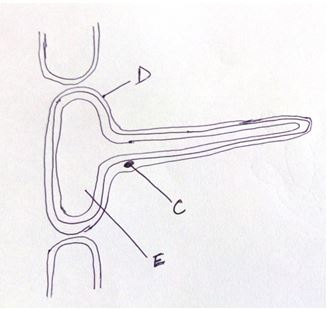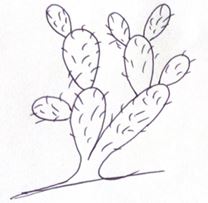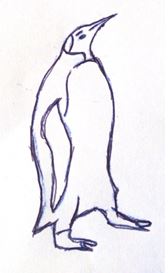INSTRUCTIONS TO CANDIDATES:
- Answer ALL the questions
Answers should be written in the spaces provided
- Name the disease in humans that is caused by lack of vitamin C. (1mk)
- State three characteristics that cause cross- pollination to take place in flowering plants. (3mks)
- Name two structures used for gaseous exchange in plants. (2mks)
- When are two organisms considered to belong to the same species? (2mks)
- State the functions of the following cell organelles (2mks)
- Golgi apparatus..
- Ribosomes
- State three ways in which xylem vessels are adapted to their functions. (3mks
- A person who found to pass out large volumes of dilute urine frequently.
- Name the disease the person was suffering from (1mk)
- Name the hormone that was deficient. (1mk)
- State any three pieces of evidence that support the theory of evolution. (3mks)
- Why are people with blood group O universal donors. (2mks)
- Which organelle would be abundant in
- Skeletal muscle cell(1mk)
- Palisade cell(1mk)
- In an experiment, it was found that when maggots are exposed to light, they move to dark areas. Name
- The type of response exhibited by maggots.(1mks)
- The advantages of the response to the maggots(1mk)
- State two ways by which the human immune deficiency (H.I.V) is transmitted other than through sexual intercourse. (2mks
- Suggest three reasons why green plants are included in a fish aquarium. (3mks)
- State three ways in which some fungi are beneficial to human. (3mks)
- Why is oxygen important in the process of active transport in cells. (2mks)
- State two disadvantages of metamorphosis to the life of insects. (2mks)
- A person whose blood group is AB requires a blood transfusion. Name the blood groups of the donors. (1mk)
- State two functions of muscles found in the alimentary canal of mammals. (2mks)
- Name three types of chrosomal mutations. (3mks)
- The diagram below shows a specialized plant cell
.- Name the cell.(1mk)
- Name the parts labeled D and E. (2mks)
- State the function of the part labeled C. (1mk)
- Distinguish between haemolysis and plasmolysis. (2mks)
- Explain why it is not advisable to be in poorly ventilated room with a burning charcoal stove. (3mks)
- What is the role of bile salts in digestion in human’s. (2mks)
-
- The following is the dental formula of a certain mammal. i 0/3 c 0/1 pm /3 m3/3
- State the likely mode of feeding for the mammal(1mk)
- Give a reason for your answer in (a) above (1mk)
- State the changes that occur in arterioles in the human skin during thermoregulation (2mks)
- Name the site of anaerobic respiration in a cell(1mk)
- The following is the dental formula of a certain mammal. i 0/3 c 0/1 pm /3 m3/3
-
- What is meant by convergent evolution? (1mk)
- State two limitations of fossils as an evidence of evolution. (2mks)
- Apart from the lungs, name two gaseous exchange surfaces in a frog. (2mks)
-
- The diagram below represents a certain plant.
- What is the likely habitat for the plant. (1mk)
- Give two reasons for your answer in (a) above (2mks)
- What would be the expected results from a test cross. (2mks)
- The diagram below represents a certain plant.
-
- State one economic importance of each of the following plant excretory products. (3mks)
- Tannin
- Quinine
- Caffeine
- Name three salivary glands in humans. (3mks)
- Name two dental diseases (2mks)
- State one economic importance of each of the following plant excretory products. (3mks)
- The diagram below represents a certain organism
State the phylum and class to which it belongs (2mks - What is meant by the flowing terms. (2mks)
- Ecology.
- Carrying capacity

MARKING SCHEME
- Name the disease in humans that is caused by lack of vitamin C. (1mk)
- Scurvy
- State three characteristics that cause cross- pollination takes place in flowering plants. (3mks)
- Protandry
- Protogyny
- Self-sterility
- Monoecious plants
- Name two structures used for gaseous exchange in plants. (2mks)
- Stomata
- Cuticle
- lenticels
- When are two organisms considered to belong to the same species? (2mks)
- When they freely interbreed , to produce a viable off spring
- State the functions of the following cell organelles (2mks)
- Golgi apparatus
- Packing of synthesized materials/ glycoproteins
- Ribosomes
- Transport of packed materials
- Manufacture of proteins
- Transport of packed materials
- Golgi apparatus
- State three ways in which xylem vessels are adapted to their functions. (3mks)
- Lignified to prevent collapse
- Narrow to facilitate capillarity
- Hollow for continuous flow of water
- Bordered pit for lateral movement of water
- Lignified to prevent collapse
- A person who found to pass out large volumes of dilute urine frequently.
- Name the disease the person was suffering from (1mk)
- Diabetes insipidus/diuresis/water diabetes
- Name the hormone that was deficient. (1mk)
- Antidiuretic hormone/vasopresin
- Name the disease the person was suffering from (1mk)
- State any three pieces of evidence that support the theory of evolution. (3mks)
- Fossil records
- Geographical distribution of organisms
- Comparative anatomy
- Cell biology
- Comparative serology
- Comparative embryology
- Why are people with blood group O universal donors. (2mks)
- Blood has no antigen and does not cause agglutination
- Which organelle would be abundant in
- Skeletal muscle cell. (1mk)
- mitochondria
- Palisade cell (1mk)
- chloroplast
- Skeletal muscle cell. (1mk)
- In an experiment, it was found that when maggots are exposed to light, they move to dark areas. Name
- The type of response exhibited by maggots. (1mks)
- Photo taxis
- The advantages of the response to the maggots. (1mk)
- To avoid desiccation/drying/dehydration
- To escape from predators
- To avoid desiccation/drying/dehydration
- The type of response exhibited by maggots. (1mks)
- State two ways by which the human immune deficiency (H.I.V) is transmitted other than through sexual intercourse. (2mks)
- Use of unsterilized instrument
- Blood transfusion
- Mother foetus
- Mixing of infected blood through cuts
- Suggest three reasons why green plants are included in a fish aquarium. (3mks)
- Food, shelter, breeding sites; removal of CO2; for oxygen
- State three ways in which some fungi are beneficial to human. (3mks)
- Brewing; baking; manufacture medicine; some edible
- Why is oxygen important in the process of active transport in cells. (2mks)
- Oxygen is required for respiration that produces energy necessary for active transport
- State two disadvantages of metamorphosis to the life of insects. (2mks)
- No competition for food
- Enable survival in adverse conditions
- A person whose blood group is AB requires a blood transfusion. Name the blood groups of the donors. (1mk)
- A,B,AB, O (rej if the four not given)
- State two functions of muscles found in the alimentary canal of mammals. (2mks)
- Act as values to regulate food movement
- Churning food
- Name three types of chrosomal mutations. (3mks)
- Inversion; duplication; deletion; translocation; non - disjunction
- The diagram below shows a specialized plant cell.
- Name the cell. (1mk)
- Root hair cell
- Name the parts labeled D and E. (2mks)
- D – cell wall
- E- sap vacuole
- State the function of the part labeled C. (1mk)
- Control activities’ of the cell
- Name the cell. (1mk)
- Distinguish between haemolysis and plasmolysis. (2mks)
- Haemolysis- bursting of an animal cell when placed in a hypotonic solution.
- Plasmolysis- loss of water by a plant cell when placed in a hypertonic solution.
- Explain why it is not advisable to be in poorly ventilated room with a burning charcoal stove. (3mks)
- In a poorly ventilated room the charcoal burns producing carbon (ii) oxide; it combines with haemoglobin forming a stable compound carboxyhaemoglobin which which does not easily dissociate ; it prevents oxygen from combining with haemoglobin leading to suffocation. (3mks)
- What is the role of bile salts in digestion in human’s. (2mks)
- Emulsification
- Creates alkaline conditions ( for enxyme action)
- The following is the dental formula of a certain mammal
.i 0/3 c 0/1 pm 3/3 m 3/3- State the likely mode of feeding for the mammal. (1mk)
- herbivorous
- Give a reason for your answer in (a) above (1mk)
- Absent of upper incisors/presence of horny pad
- Lack of canines on upper jaw/diastema present
- Absent of upper incisors/presence of horny pad
- State the likely mode of feeding for the mammal. (1mk)
- State the changes that occur in arterioles in the human skin during thermoregulation (2mks)
- Vasoconstriction in cold conditions
- Vasodilation in hot conditions
- Name the site of anaerobic respiration in a cell (1mk)
- Cell's Cytoplasm
- The following is the dental formula of a certain mammal
- What is meant by convergent evolution? (1mk)
- A type of evolution where structures of different origin and modified to perform similar functions
- State two limitations of fossils as an evidence of evolution. (2mks)
- Missing links
- Partial fossilization
- Destruction by geological activities
- Apart from the lungs, name two gaseous exchange surfaces in a frog. (2mks)
- Mouth/buccal cavity
- skin
- What is meant by convergent evolution? (1mk)
- The diagram below represents a certain plant
- What is the likely habitat for the plant. (1mk)
- Arid/semi arid
- Give two reasons for your answer in (a) above (2mks)
- Leaves modified into spines/thorn
- swollen stems to store water
- What is the likely habitat for the plant. (1mk)
- What would be the expected results from a test cross. (2mks)
- If unknown phenotype is heterozygous, the off- spring are a mixture of dominant and recessive 1:1, if phenotype is homozygous; all off spring display the dominant trait.
- The diagram below represents a certain plant
- State one economic importance of each of the following plant excretory products. (3mks)
- Tannin
- Treating leather
- Quinine
- Anti- material drug
- Caffeine
- Stimulant in beverage
- Tannin
- Name three salivary glands in humans. (3mks)
- Sub maxillary salivary gland
- Subliqual gland
- parotid
- Name two dental diseases (2mks)
- Periodontal
- Dental caries
- State one economic importance of each of the following plant excretory products. (3mks)
- The diagram below represents a certain organism
State the phylum and class to which it belongs (2mks)- Phylum- chordata
- Class- aves
- What is meant by the flowing terms. (2mks)
- Ecology
- study of inter-relationship of organisms and their environment
- Carrying capacity
- maximum number of organisms of the same species on area can support without depleting available resources
- Ecology
Download Biology Paper 1 Questions and Answers - Form 4 End Term 1 Exams 2023.
Tap Here to Download for 50/-
Get on WhatsApp for 50/-
Why download?
- ✔ To read offline at any time.
- ✔ To Print at your convenience
- ✔ Share Easily with Friends / Students




